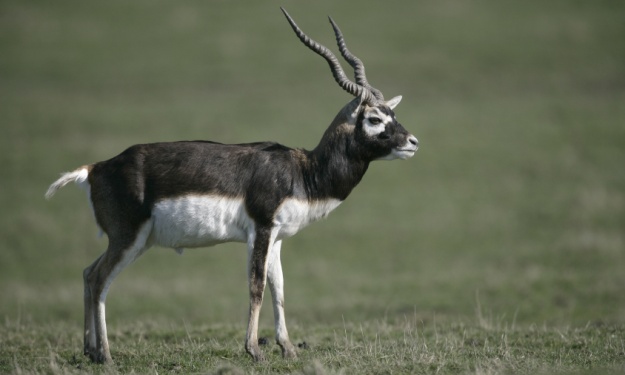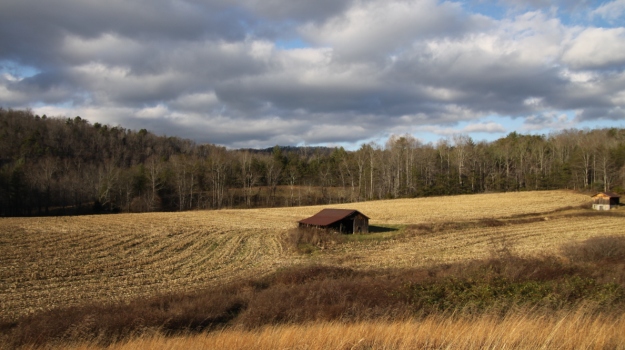Hunting and Eating Texas’ Free-Ranging Exotic Animals

Editor’s Note: Les Motheral has been a Mossy Oak Pro for the last 4 years, lives on the north side of Fort Worth, Texas, and has been hunting whitetails for 30 years. He’s a whitetail guide at the Monarch Ranch. When we asked Motheral to name his favorite Mossy Oak pattern, after a long pause, he said. “I wear different patterns, depending on where I'm hunting, the time of the year and the game I'm hunting. Each Mossy Oak pattern is really designed for a different purpose and a different type terrain. Probably, the pattern I use most often is Break-Up, because it’s a more-versatile pattern than some of the other patterns.”
Most of the exotic animals were brought into the central Hill Country of Texas years ago - many in the early 1930s. Kerrville is more or less the central area where you'll find most of the exotics and also around Junction and south of Austin. In this section of Texas, there’s just about every kind of exotic animal, including fallow deer, axis deer, sika deer, blackbuck antelope and Barbary sheep (aoudad).
 On the Monarch Ranch, we have a really-large population of aoudad. The 40,000+ acre Monarch Ranch was bought from the Nature Conservatory several years ago and is actually made up of two ranches - the Purser Ranch and the Baker Ranch. So-many aoudad are on this ranch that it’s not uncommon to see 100 in a day. There are thousands of them in the area where we hunt. The true name of the aoudad is Barbary sheep (goat – antelope species of North Africa), because they were brought in from the Barbary Coast by the Spanish explorers. Over the years, they escaped captivity. We also have some Spanish goats on the ranch, Oryx (antelope from Africa) that are free ranging, whitetails, feral hogs, javelina and a huge population of predators.
On the Monarch Ranch, we have a really-large population of aoudad. The 40,000+ acre Monarch Ranch was bought from the Nature Conservatory several years ago and is actually made up of two ranches - the Purser Ranch and the Baker Ranch. So-many aoudad are on this ranch that it’s not uncommon to see 100 in a day. There are thousands of them in the area where we hunt. The true name of the aoudad is Barbary sheep (goat – antelope species of North Africa), because they were brought in from the Barbary Coast by the Spanish explorers. Over the years, they escaped captivity. We also have some Spanish goats on the ranch, Oryx (antelope from Africa) that are free ranging, whitetails, feral hogs, javelina and a huge population of predators.
I guess one of the most-popular exotics is the blackbucks (antelope) from India, and we’re seeing more and more ranchers purchasing blackbucks to raise on their property. Another rancher I know who raises trophy whitetails has brought in numbers of blackbucks to help his whitetail population. He’s discovered that a blackbuck fawn can’t run as fast as a whitetail fawn. So, if a predator gets in his trophy whitetail area, the predators will attack and eat the blackbuck fawns instead of the whitetail fawns. This is one of the reasons that many ranchers who are trying to grow trophy whitetails introduce blackbucks to their whitetail operations. The blackbucks that survive really are beautiful trophies for the hunters, and they're delicious table fare.
I hunt deer and exotics more for the meat than I do for the trophy. As far as table fare, the axis deer (native of India) is the best wild-game meat you can eat. The sika deer (East Asia) is probably second in flavor, and the blackbuck is third. Another ranch - the King Ranch - also has a large population of nilgai (an antelope native to India and Pakistan) and they're delicious to eat. Although nilgai are trophy animals, many hunters take them strictly for their meat. The nilgai taste more like beef than some of the other exotics and often will weigh 400 pounds or more. The wild goats and sheep are also edible, but I consider that meat an acquired taste. It’s much more popular with Spanish-speaking people than others. Personally, I like to eat the meat of the wild goats and sheep, but there are a good number of people who don’t.
Tomorrow: Learning the Good News and the Bad News about Hunting Exotics in Texas



























